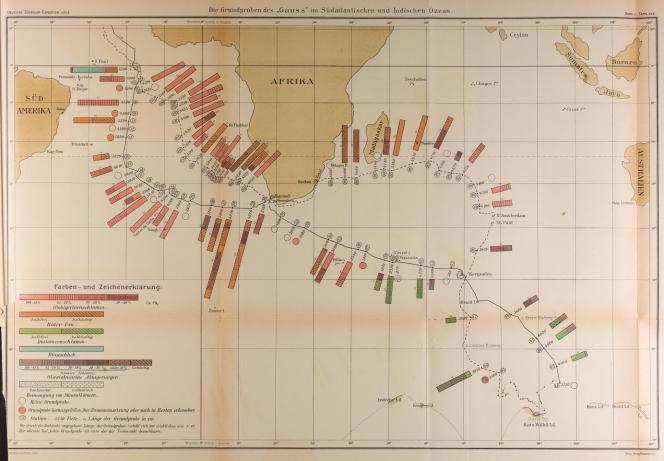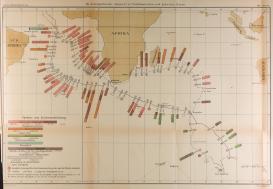The reconstruction of previous climates and climatic changes in Earth history is a cardinal activity for gauging the sensitivity of the climate system to our current anthropogenic perturbation. Being a peculiar (and largely unacknowledged) scientific practice at the border between an empirical and an exact science, paleoclimatology plays a key role in assessing the boundary conditions of the global climate's future. As such, it puts the current climatic transition into the very geohistorical perspective that the term Anthropocene necessitates, redefining the geologists’ traditional principle of uniformitarianism according to which “the present is the key to the past” into a “past that is becoming the key to the future.” As much as the Anthropocene is blurring the distinction between Earth and human history, paleoclimatology is effectively sketching out the history of the globe and an anthropogenically-modified globe all at once.

Drilling sites of the “Gauss Expedition” of 1901–1903 in the Southern Atlantic and Indian Ocean. Emil Phillippi, Die Grundproben der Deutschen Südpolar-Expedition 1901–1903, vol. 2. Reimer Verlag, Berlin, 1912.
The aim of this project is to study the historical lineage and peculiar epistemic configuration of empirical data, computer models, and numerical simulation experiments within the climate sciences, and paleoclimatology in particular. The starting point was the consideration of the early history of General Circulation Models (GCMs), which were derived from numerical weather prediction techniques but have now evolved into a core component of so-called Earth System Models. Through the historiographic reframing of the objects, techniques and longue-durée ideals of rationally modeling atmospheric motion, the project argues for reconceptualization of the notion of “uncertainty” that is prevalent in the literature on this subject. Such “uncertainty” finds a radical form in a particular application of GCMs and other models: the reconstruction of climatic events in deep time. Here, geological climate records (specifically deep-sea sediment cores) serve as a data horizon for constraining the numerical experiments, while, at the same time, it is the models themselves that create the basis for interpreting the proxy data itself. Model and data stabilize themselves in a semi-empirical loop operation. By discussing an exemplary simulation of a possible pre-Quaternary, analogue to current climatic change (the PETM), the project focuses on modes of representation, time evolution, and nonlinearity in modeling a climatic history of the Earth.

